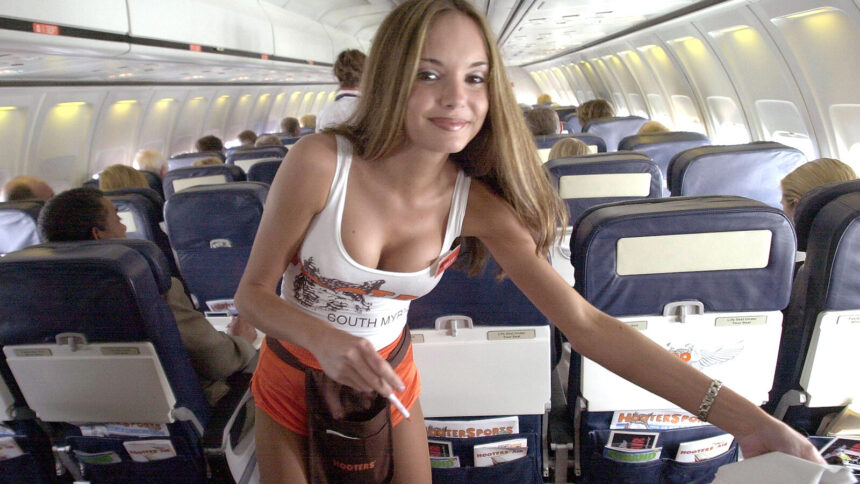The wacky, the wild, the damned and the beautiful: we’ve done a deep dive and found some of the strangest and most exotic start-ups in airline history.
1. Pet Airways
Headquartered in Delray Beach, Florida, Pet Airways was an airline that specialized exclusively in air transportation of pets. In other airlines, pets are transported through cargo. But Pet Airways was the only airline to transport pets like passengers. The airline ceased its operations in 2011.
Pet Airways existed from 2009 to 2011. It flew around 9,000 pets during its short-lived operation. In 2009, the airfare for pets started at $150, with the price increasing with the size of the pet and distance traveled. The pets or should we say passengers were given great hospitality.
All the pets received pre-boarding walks and bathroom breaks. A flight attendant would check them every 15 minutes and receive care from them as well. The airline had also established pet lounges at the airports they operated. Seriously!!
2. The Lord’s Airline
A DC-8 with no alcohol on board, no inflight magazines but the Bible and Torahs, including religious movies and shows as entertainment. This was Lord’s Airline. The DC-8 which flew in 1985 was like a flying Church. The airline was founded by New Jersey-based businessman Ari Marshall, who bought an old DC-8 and introduced this unique concept.
The plane was meant to fly from Miami to Israel, offering a direct flight path to Jerusalem. The route was popular for people because there wasn’t a direct flight path. The religious pilgrims had to catch a connecting flight. Lord’s Airlines could have solved this issue.
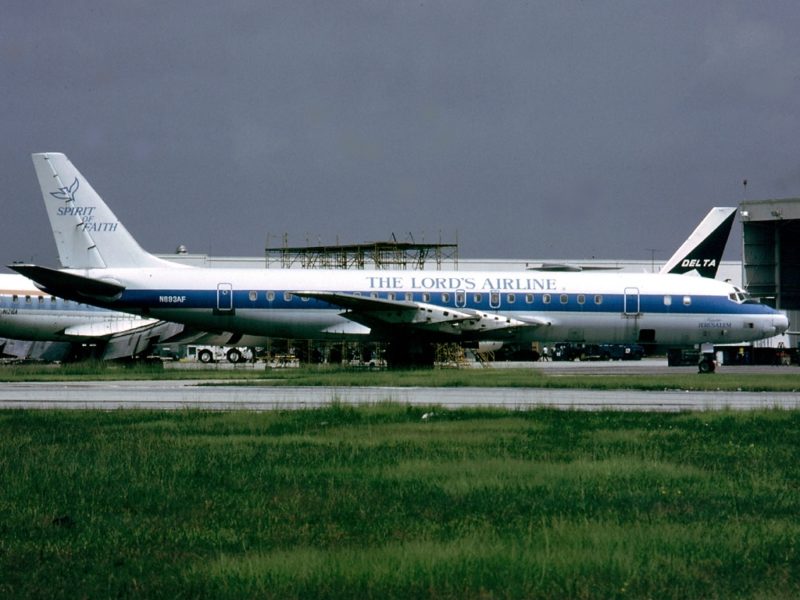
“The Russians have their airline. The British have one. So does Playboy. So why shouldn’t the Lord have an airline all his own?”
Ari Marshall in 1986
However, due to unfinished maintenance and modifications, the airline couldn’t obtain an FAA certification. The team removed Marshall and added a new chairman, Theodore Lyszczasz, who didn’t go well with Marshall in media. The airline never made it to the skies and the sole DC-8 was scrapped.
3. Smokers Express
Smokers Express was an airline that offered smoking flights to passengers. It was a domestic airline in the US, founded in 1993. However, it never received enough funding to begin operations.
This airline was really strange. Smoking was not just allowed but encouraged. The airline would have given free cigarettes and ashtrays during the flight. The airline had advertised free headsets, and foods such as hamburgers, steaks, and pizzas for the people.
Since smoking is banned on flights, this airline would be membership-based, $25 per year. Only people aged 21 or over could join the flight so there wouldn’t be any crying babies. Three DC-9s were purchased with plans to add 27 more. Flame-retardant carpet and high-level air circulation systems would have been added to the planes.
4. MGM Grand Air
MGM Grand Air was an airline based in Bloomington, Minnesota which operated general charter services to sports teams, vacation wholesalers, and government agencies. The airline’s main base was at Minneapolis-Saint Paul International Airport, with hubs at Denver International Airport, Dallas/Fort Worth International Airport, Detroit Metropolitan Wayne County Airport, McCarran International Airport in Las Vegas, Lambert-St. Louis International Airport, and Will Rogers World Airport in Oklahoma City. The airline was also a contractor of JPATS (another unusual airline mentioned in this post) until its shutdown in 2008.
In 1987, MGM Grand Air flew luxurious Douglas DC-8 and Boeing 727 aircraft between Los Angeles International Airport and John F. Kennedy International Airport. All the aircraft had premium seating configurations.
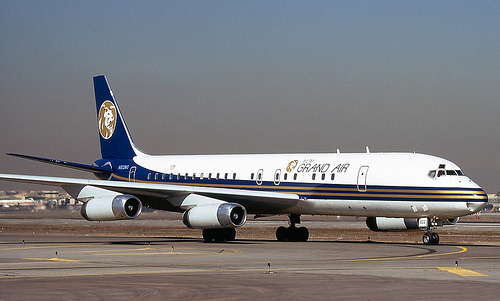
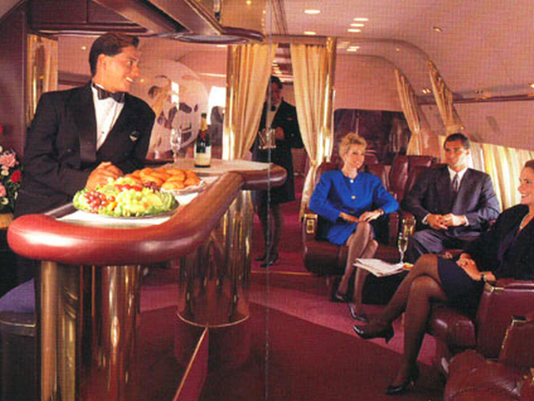
By 1994, business jets gained popularity and MGM was sold off. The new buyers changed the name to Champion Air. The airline continued as a charter airline and at one time surpassed Sun Country Airlines, becoming the leading charter operator for Northwest-owned MLT Vacations. The airline ceased operations in 2008 due to rising fuel costs and aging 727s.
“Our business model is no longer viable in a world of $110 oil, a struggling economy, and rapidly changing demand for our services.”
CEO Lee Steele
5. Casino Express
Casino Express Airlines was basically a flying casino. Its main objective was to transfer wealthy customers to Elko Regional Airport. The airline flew exclusively for the customers of Red Lion Hotel and Casino in Elko, Nevada. The roundtrip fares were as low as $49. However inflight, passengers could lose or win money.
The airline flew to major US cities with Boeing 737 aircraft. Major attention was given to areas where strong interest in casino games was present. It was the first, and so far the only airline to provide gambling services onboard. Poker, Roulette, and Blackjack were very famous with the airline. Once, a passenger lost $100,000 before arriving at his destination.
6. Skytraders Airline
Skytraders is an Australian Airline that provides special air services to the Australian Federal Government. It was founded in 1979 and is headquartered at 180 Jersey Road, Woollahra, New South Wales, Australia. The airline has received a contract for Antarctic air services from the Australian Antarctic Division. The airline has also expanded its services to Special Operations Command, Home Affairs/Australian Border Force, Victoria Police, and the Australian Maritime Safety Authority.
This airline offers flights to Antarctica. It operates flights for the Australian Antarctic Division’s scientific research program in Antarctica. The airline is one of only seven tenders to connect to Antarctica. The airline was chosen because of its great safety systems. An ACJ (Airbus Corporate Jet) is operated between Hobart and a hard glacier runway near Casey Station. The airline aims to offer around two dozen flights each summer. The airline has a fleet of three Airbus A319 jets along with 2 CASA 212-400 and one Beechcraft King Air 350.
7. Janet Airlines
Janet Airlines, commonly known as Janet is an unofficial name given to top-secret aircraft that carry high-ranking officials to Special Access Facilities (SAPF). The airline can be seen serving the mysterious area 51 and Tonopah Test Range. The aircraft is also very basic, with no special designs or logo, just a red line across the fuselage.
JANET stands for “Just Another Non-Existent Terminal” or “Joint Air Network for Employee Transportation”. Due to the airline being so secret, little is known about it. In 2010, the airline hired Boeing 737 flight attendants to be based in Las Vegas, however, they had to go through a Single Scope Background Investigation. The passengers in Janet Airlines board through the west side of the airport, from a special part of Harry Reid International Airport. This area isn’t open to other civilians and, there is also a small terminal building for Janet’s passengers. The airline flies 737s and Beechcraft planes.
8. JPATS
Justice Prisoner and Alien Transportation System (JPATS) is the largest prison transport network in the world. It is an airline of the US Government that transports prisoners to and from detention centers, court, and prisons. It is sometimes also called CON Air. Although the airline is mainly used for a prison, it also takes part in military and state law operations.
The airline reportedly transports around 260,000 prisoners every year. It has hubs in Las Vegas, Nevada, Puerto Rico, and the Virgin Islands and all air fleet operations are in Oklahoma City, Oklahoma. A Boeing 737-400 is used to transport illegal residents, and dangerous prisoners are transported individually through smaller turboprops or regional jets.
After the 9/11 attacks, JPATS was the only airline allowed to fly in the US airspace. Passengers in this airline are handcuffed and restrained, more dangerous criminals are transported with more security, their vision is also blocked and movements are completely restrained.
9. UPS (Passenger Flights)
United Parcel Service, or UPS, operated 50 727-100QFs (Quiet Freighter – re-engined with Stage III-compliant Rolls-Royce Tay turbofans) and eight 727-200s. In 1996 a company division called the Asset Utilisation Experiment had five of the -100QFs extensively modified by PEMCO World Air Services in Tampa Florida – N946UP, N947UP, N949UP, N950UP and N951UP. Two permanent lavatories, sidewall trim, flight attendant jumpseats on bulkheads, and TCAS, new anti-collision avionics then only required on passenger liners, not freighters, were all installed. These machines became 727-100QCs, for Quick Change, an old Boeing factory designation for similarly convertible 727s.
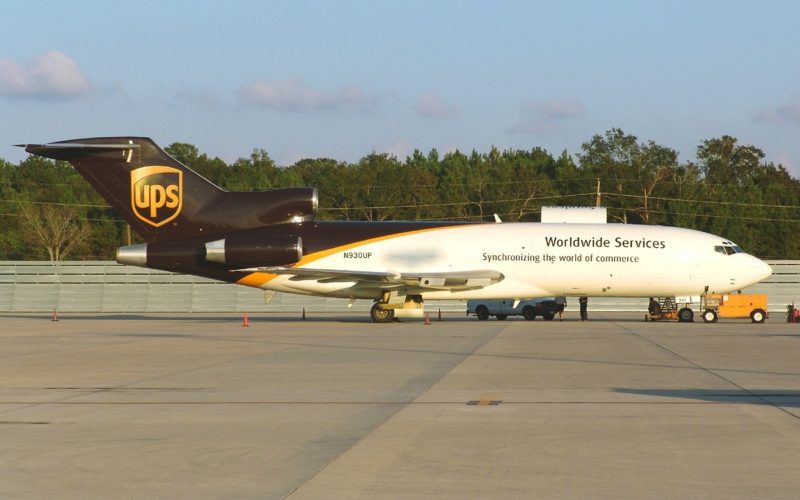
Every Thursday or Friday, these five birds would have overhead bins secured in place, followed by ten pallets rolled aboard via the main deck cargo door, each comprising two complete rows of six electric blue seats with a generous 33” pitch, complete with a chunk of carpeted aisle. Wiring looms were connected up to provide galley power, call buttons, reading lights, seat belt signs. In under four hours, a 727 freighter was ready to fly 113 passengers off to the beach. Flights ran mostly from Pittsburgh, Louisville and Philadelphia, to the likes of Miami, Bermuda, Orlando, Cancun, Aruba, Barbados. Due to the short range of the 727-100, some trips needed a fuel stop, such as Boston to Aruba, which included 40 minutes on the tarmac at Orlando for a splash-and-dash. Despite being a leisure / charter only affair, service included hot meals and free alcohol in flight with a a hot towel service during descent.
The interiors were intended to be interchangeable but in fact each fuselage was a slightly different shape – manufacturing tolerances on 1960s aeroplanes were not what they are today, plus a few decades of flight had taken their toll. Aircraft were having to be ferried to be reunited with ‘their’ QC interior, so it was decided to leave them permanently in full passenger configuration, all week. The subfleet was profitable and pilots liked the trips (daylight flying and flight attendants were both a novelty), but using the planes to fly boxes was more profitable, so after five years the five jets were returned to cargo hauling for the remainder of their lives.
10. Hooters Air
Hooters is a national restaurant chain in the United States specialising in hot wings served by pretty girls in short shorts and tight t-shirts. Hooters owner Robert Brooks bought Pace Airlines, a charter operator based in Winston-Salem in North Carolina, moved the focus of operations to Myrtle Beach in South Carolina and rebranded it as Hooters Air.
The new operation was primarily aimed at sports charters bringing golfers to Myrtle Beach’s 100+ golf courses; at its height, Hooters Air was flying in 5,000 golfers a week. Scheduled destinations served by the six 737s and sole 757 included leisure ports such as Nassau, Orlando, Las Vegas; and secondary cities such as Baltimore, Rockford in Illinois and Gary, Indiana (the latter being boosted as a mini connecting hub).
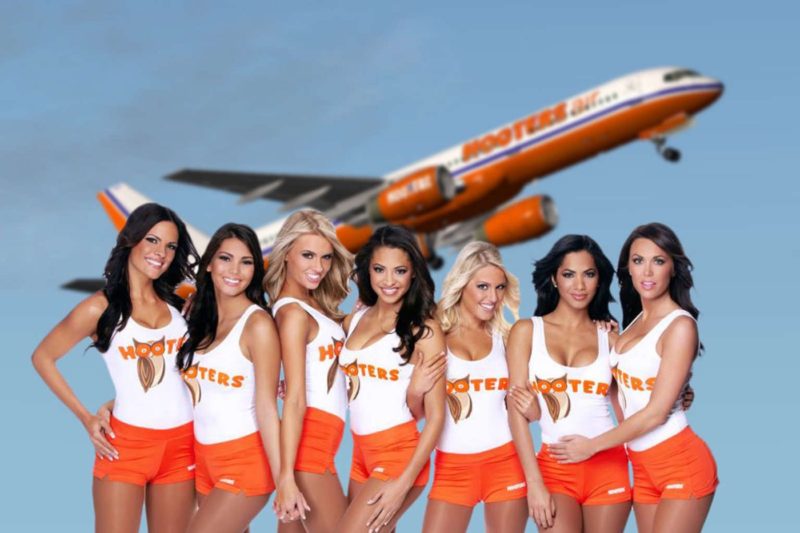
Contrary to popular belief, the cabin crew were not Hooters Girls, but traditionally attired professional flight attendants, with two Hooters Girls on each flight to spice things up. Despite low fares, legroom was a generous 34 inches and hot food was served on flights over one hour. Keeping up the golfing theme, the product was known as Club Class.
Unfortunately, there wasn’t room in the marketplace for a small boutique airline with limited routes and limited appeal outside of a certain male demographic, and after losses of up to forty million dollars, Hooters Air was grounded by its parent company in 2006 (Pace Air lasted until 2009).
Cover Image: via Getty Image


